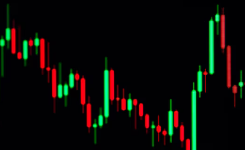Does it make sense to use artificial intelligence to trade with automatic systems?
This is a very interesting question. When developing a system, at Liderbot we believe that opportunities are generated by inefficiencies. There will always be a better moment to set the stop-loss and take profit, and the temptation for an algorithm to adjust it is enticing, but in our opinion wrong because it can cause the strategy to completely deviate from the parameters that were correct when the backtest was performed.
Therefore, currently at Liderbot we use artificial intelligence as a tool to assist in programming, inspiration, process optimization, etc., but all our algorithms use parameters with fixed values that will not change. If a system that was winning fails, it will be because the inefficiency found has ceased to exist. Thus, AI, for us, is a help in creating and developing systems, optimizing processes, and creating new tools more quickly, but our algorithms will NEVER change the values of the parameters according to what the market demands. We set those values. The market will move as it pleases, and our algorithms will do what we please. Therefore, you can be at ease if you observe that a system does not operate for a while or if it operates more than usual. If the system does it, it is because it needs to be done. All of this is studied and considered.
Even so, we recommend using our Monte Carlo simulation tool so that, before using a system, you know the drawdowns you might face in the future before deciding if a system has definitely died or is still within a margin of confidence.
To address this topic, we must answer questions that I consider essential. Please read to the end because it’s worth it.
What do those who lose the most when trading with automatic trading systems do? And what do those who win the most do?
I’ll start with those who win the most. They all have one thing in common. They activate a system that has been audited for at least 3-4 years and do not disconnect it. They do not panic during periods of drawdown, possibly because they already knew where to set their stop-loss for that system before they started trading it. Let’s look at an example:

Equity curve of Joseja 2 mini Nasdaq, 7 years with verified profits.
As of March 9, 2024, the best trading system for futures in the entire marketplace of iSystems.
It may seem very easy to win with a system by looking at this chart, but the reality is that it’s not for some. Why? And what if it turns around and starts to fall? That is the question that arises for everyone when they enter a drawdown. To stay true to the strategy in moments of drawdown, we will perform a Monte Carlo simulation of 10 combinations and stick with the worst of them all.



Simulation 1 has the longest losing streak, amounting to $26,130. Here you have the “hard stop” that you must at least be willing to assume to operate with this system.
What do those who lose do?
They do things like this:
- They activate it and then stop it after an hour, mixing their way of manual trading with the correct and studied approach of the algorithm, trying to beat the market even more. Mistake.
- They use many systems at once with systems that have little verified time and pushing the margins.


